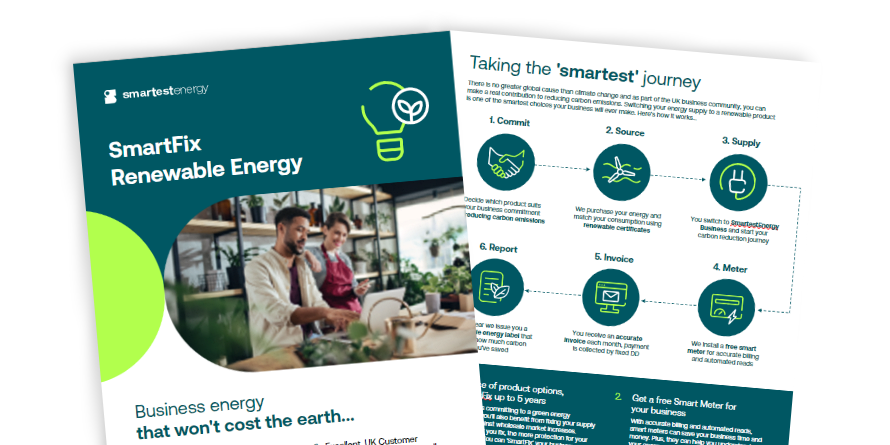Posted on: 25/03/2024
In this blog, Mark Cox, Strategic Account Manager, host of our recent Non-Commodity Costs webinar, dissects the impending rise in non-commodity costs on your business energy bill and the knowledge to navigate this changing environment and make informed decisions about your energy strategy.
Non-commodity costs, a significant portion of your energy bill, are projected to rise in the coming years. Let's delve into the key factors driving this trend:
Policy Shifts and Subsidy Adjustments
The government's recent policy decisions are impacting the energy landscape for businesses. Here's a breakdown of two key areas:
- Energy Intensive Industry (EII) Support Levy
The EII program aims to support energy-intensive industries by exempting them from a portion of certain non-commodity costs associated with their electricity bills.
Since 2017, the EII Exemption Scheme has provided relief for up to 85% of the costs associated with renewable electricity schemes. However, on 23 February 2023 Kemi Badenoch, the Business Secretary, announced the British Industry Supercharger which included three measures targeted at bringing EIIs costs more in line with other global competitors:
- Increase in aid intensity up to 100% for the existing EII Exemption Scheme
- 100% exemption from GB Capacity Market costs
Rebates on network charges
Following three government consultations, legislative progress has been made to address electricity costs for Energy Intensive Industries (EIIs). Primary legislation under the Energy Act 2023 established the Network Charging Compensation Scheme, with subsidy control assessment completed by the Competition and Markets Authority in December 2023. Secondary legislation laid out regulations for all measures on 22 January 2024.
Parliamentary debates are ongoing to finalise legislation by 1 April 2024. From this date, the Exemption Scheme will increase, and the Capacity Market mechanism will be operational. Electricity suppliers are preparing to submit forecasts to the Electricity Settlements Company (ESC) for savings to EIIs starting from 1 October 2024, managed by the Department for Business and Trade (DBT). Refunds for network charging costs will begin under the Network Charging Compensation Scheme from April 2025.
- The Low Carbon Contracts Company (LCCC) and Rising Costs:
The LCCC are responsible for setting CfD supplier obligation rates, in order to facilitate CfD payments to generators is finally acknowledging underestimations in their Interim Levy Rates (ILR) from last year. While adjustments have been made to these scheme payments, the question of their adequacy remains. Critics argue that these adjustments may not fully address the rising costs of renewable energy projects, potentially leading to:
Higher CfD costs for businesses:
If LCCC underestimates the true cost of CfD scheme payments, this could translate to higher top-up payments from suppliers on behalf of consumers via CfD Supplier Obligation.
- Nuclear Regulated Asset Base:
The UK is implementing a new scheme to bolster the construction of nuclear capacity, aligning with its ambitious net-zero targets. This scheme bears striking resemblance to the Contracts for Difference (CfD) model, with a significant divergence: payments to counterparties will be made during the construction phase rather than upon generation. Recognizing the capital-intensive nature and extended construction timelines of nuclear projects, this innovative approach aims to mitigate project finance costs and risks. Anticipation surrounds Sizewell C, expected to secure the inaugural Regulatory Asset Base (RAB) contract, marking a pivotal step in advancing nuclear energy infrastructure while bolstering the nation's clean energy transition.
- Impact of Zonal Pricing on Non-Commodity Costs
The potential implementation of zonal pricing in Britain's electricity market could have implications for non-commodity costs associated with energy bills. While this article focuses on the impact on directly priced electricity costs, it's important to consider how zonal pricing might influence other charges.
Here are some potential scenarios:
- Transmission and Distribution Costs: Zonal pricing aims to improve grid efficiency by incentivising power generation closer to demand centres. This could potentially lead to a reduction in transmission and distribution costs as less electricity needs to travel long distances. However, the specific impact would depend on how the zonal pricing scheme is designed and implemented.
- Taxes and Levies: Some non-commodity costs, such as environmental levies and government taxes, are currently applied uniformly across the country. Zonal pricing might lead to adjustments in these charges to account for regional differences in grid infrastructure and carbon emissions.
Overall, the impact of zonal pricing on non-commodity costs remains uncertain and will require further analysis. However, it's essential to consider the potential changes when evaluating the overall impact of this policy on businesses and consumers.
Stay ahead of the curve by signing up for regular updates through our preference centre. Receive valuable insights and expert tips to navigate the evolving energy landscape and minimise the impact of rising non-commodity costs on your business.
>Visit our preference centre now<

 United States
United States Australia
Australia






